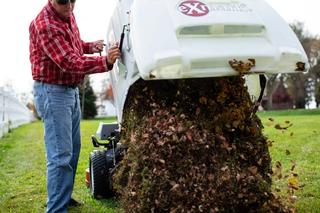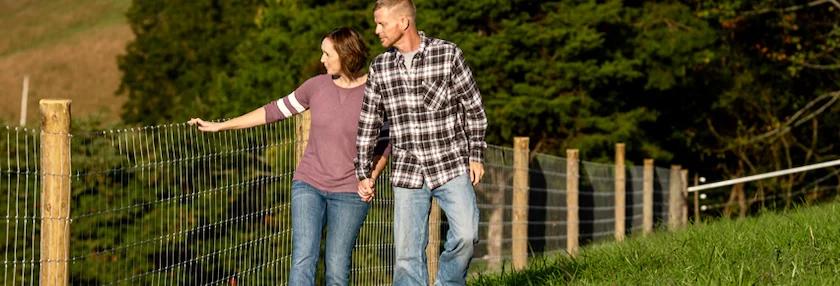Plant a Fountain, Dig a Pond


Relax with a farm pond or backyard water feature
Rural people are practical, but they also appreciate things that make life worth living, like being near water. There’s something calming and restorative about a visit to a stream, river, or lake. And that’s the hidden gem about farm ponds.
In addition to providing practical benefits like erosion control, collecting and storing water for irrigation, fire protection or livestock, or even providing a favored “fishin’ hole” close to home, farm ponds provide solace in these troubled times.
As the saying goes, a bad day fishing beats a good day at the office
More than a low spot
Choosing a site for your pond will depend on many factors related to your topography. A natural draw or coulee can be dammed, but if your property is frying-pan flat, plan on excavating it out.
Before starting up your cousin’s Caterpillar bulldozer, it will pay to contact the EPA in your state to make sure surface water isn’t regulated. The next in line to contact is the Natural Resources Conservation Service (NRCS) which may have oversight in your area. The good news is that they can help you, though.
You’ll need to fully understand what regulations need to be met and the likely effect your pond will have on the watershed in the area, both positive and negative. The bottom line is that your site actually lends itself to proper pond maintenance.
Pond construction and management is more difficult than most people realize. You don’t just put up a dam, wait for it to fill, and throw in some fish.
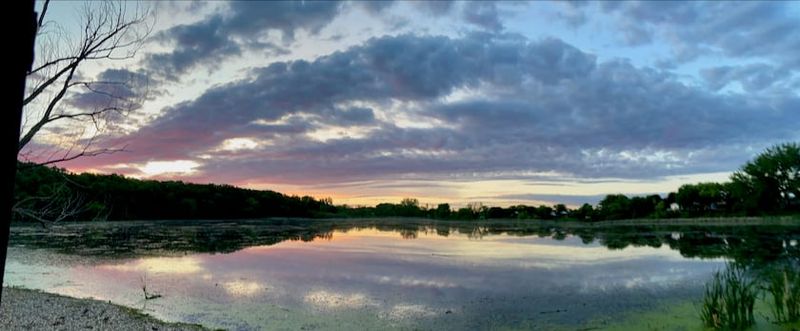
In general, the watershed that fills the pond should be 10 to 20 acres times the pond surface. Said another way, you need to have 10 to 20 acres filling your one-acre pond. Your NRCS office has experts who will advise you—pay attention to them since they have done this many times before.
Digging and maintenance
Some ponds are made by damming a gully, and some are created by excavating existing low spots. Regardless of which you face, it will pay to install a pond liner, since your soil may not have a sufficient clay content to actually hold water.
These are flexible, impermeable membranes that will withstand weather and water conditions for years, if not decades. Pond liners changed the backyard pond game, enabling a pond to be placed in even challenging areas where rocks or sand actually promote drainage (which is another word for leakage).
The biggest threat to your farm pond is actually erosion, which can fill up and flatten the bottom of your swimming hole in no time. It will pay to plant grass waterways all around the edge, and to also add large-stone rip-rap. Underwater rip-rap will also provide fish habitat.
Make a spray
If you plan on adding fish and are unsure of how much fresh, clean surface water will charge your pond, consider adding a bubbler or fountain. As water is pumped into the air, it returns with fresh oxygen for fish.
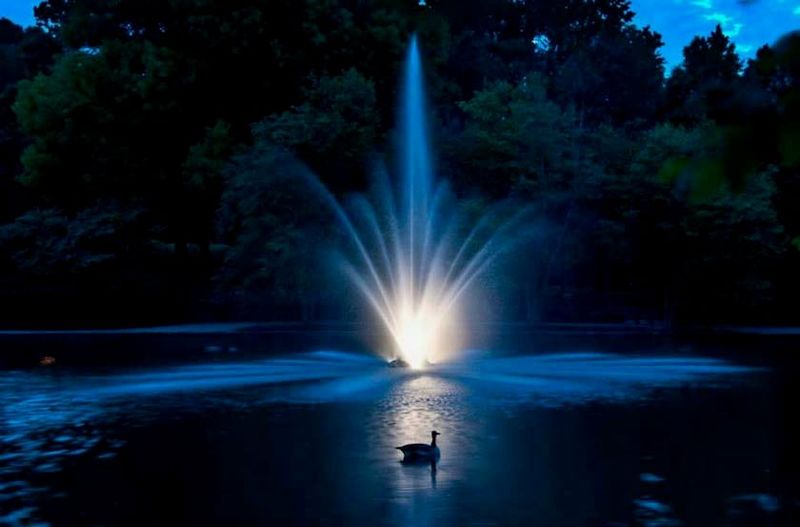
Traditional fountains are attached to submersible pumps that usually sit on a stand, shelf, or bottom of the pond. Floating fountains are another popular choice for ponds or lakes and can be anchored, if desired. Some even provide lighting effects, which makes for a dramatic view if you can see the pond from the farmhouse.
Doug Scott of landscape design company Redeem Your Ground (redeemyourground.com) in Atlanta, Ga. has seen popularity of fountains really take off.
“Fountains are one of the most popular water features I install for my clients,” Scott said. “Not only do they create the sights and sounds my clients are looking for, they do it in a way that accommodates their potential space and budget constraints.”
Stocking is easily accomplished through commercial fish dealers. Look for one that raises species that will thrive in your area.
Be sure to check with your state’s natural resources department before ordering fish to stock your pond—some species are better than others, and a few—like the infamous “jumping carp”—are prohibited.
Look closer, like your yard
If you don’t have the space for a full-blown, several acre farm pond, you might want to consider adding a smaller version to your back yard.
When it comes to beautifying the lawn, experts say water features are one of the best ways to add visual interest and a sense of peace and calm.
Water features not only enhance backyard beauty by increasing visual interest, the bubbling sounds add a sense of calm to any outdoor space.
Scott says that backyard water features bring wildlife and nature right to your back yard.
“Water features not only enhance backyard beauty by increasing visual interest, the bubbling sounds add a sense of calm to any outdoor space,” Scott said. “They also attract birds, butterflies and all kinds of wildlife, literally bringing life into your back yard.”
In a new video, Done-In-A-Weekend Projects, Go With the Flow, Scott discusses the various options available for water features, along with the benefits of each. He also outlines the maintenance needs and other considerations of each water feature type, so homeowners can choose the right type for their space.
Water gardens and fishponds
“If you’re looking to literally bring nature into your back yard, water gardens and fishponds are really the way to go,” Scott said.
As the name implies, water gardens are gardens of plants that live in and around water. Best incorporated into a natural setting, water gardens enable homeowners to inject unique and vibrant plants into their landscapes. Plants common to water gardens include water lettuce, water lilies, horse tail, blue iris and sweet flag.
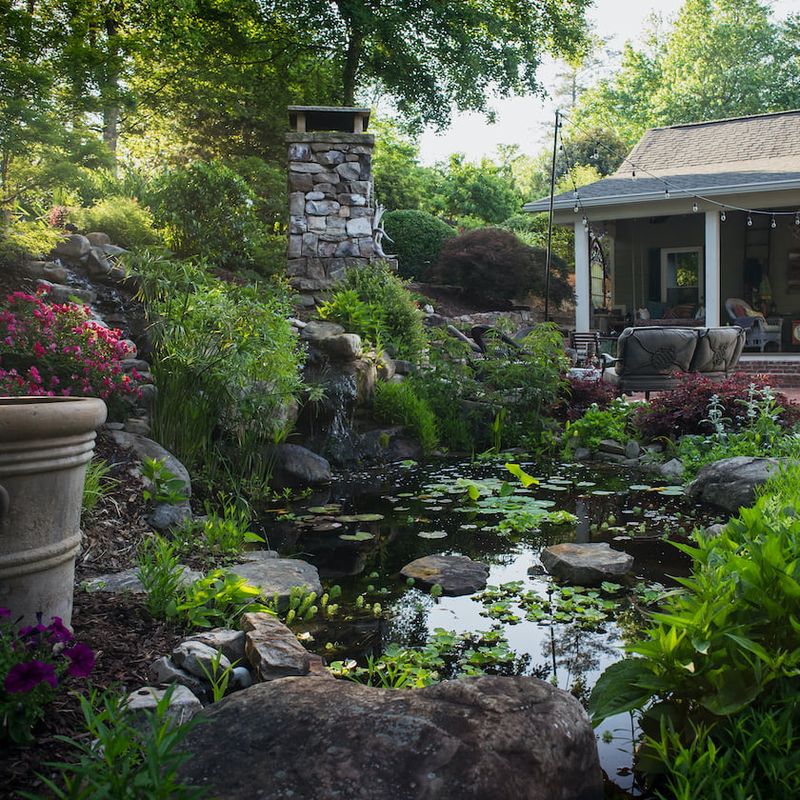
Much like water gardens, fishponds are best incorporated into a naturalized setting, and contain many of the same plants.
“The added bonus with fishponds, however, is that you’ll be able to enjoy the fish—mainly koi and goldfish—which you’ll be providing a home to,” Scott said.
Scott cautions that fishponds do add expense and necessary periodic maintenance, when compared to other water features. Additionally, homeowners must be cognizant of predators, both from the land and from the air, and provide adequate protection for the fish.
“Although adding a pond or water garden is more involved than just buying a fountain and plugging it in, so to speak, the life it’ll bring to your family outdoors is virtually limitless,” Scott said.

Waterfalls and streams are other popular back yard water feature options. However, due to the engineering required to successfully install a pond or stream, Scott highly recommends most homeowners work with a professional installer on such a project. This minimizes the chances of things going wrong in the process.
Watch the complete Done-In-A-Weekend Projects episode and more at Exmark.com/Backyard. Also, check out each of the Exmark Original Series on the site.
Tags:Seasonal Living

Acreage Life is part of the Catalyst Communications Network publication family.













